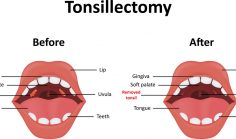Cerebral palsy is a group of chronic disorders impairing control of movement that appear in the first few years of life and generally do not worsen over time. These disorders are caused by faulty development of or damage to motor areas in the brain that disrupts the brain’s ability to control movement and posture.
Cerebral Palsy

What Is Cerebral Palsy
What Causes Cerebral Palsy
Cerebral palsy occurs due to damage to areas of the brain that direct movement interferes with the brain’s ability to control movement and posture. Cerebral palsy may develop before, during, or after birth.
Causes include:
- Brain tissue may not develop correctly during pregnancy. The growing fetus may experience a lack of oxygen or nutrients.
- Child sustains a head injury or brain infection.
- Mother’s and child’s blood types are not compatible.
- Mother has rubella while pregnant.
- Stroke or bleeding occurs in the baby’s brain during development or after birth.
- Child is deprived of oxygen during or after birth.
- There are abnormalities of the umbilical cord or placenta, or the placenta separates too early from the wall of the uterus.
- Child has meningitis , Encephalitis , seizures, or head injury.
- Child has genetic/metabolic abnormalities.
Despite common misconceptions, cerebral palsy is caused by problems surrounding the delivery of the infant less than 1% of the time.
Risk Factors For Cerebral Palsy
Cerebral palsy occurs in 2 out of every 1,000 births in the developed world.
Risk factors for cerebral palsy include:
- Infection or blood clotting problems during pregnancy
- Vaginal bleeding during pregnancy
- Seizures or intellectual disability in the expectant mother
- Complicated or premature delivery
- Breech birth
- Low Apgar score (a rating of the child’s condition just after birth)
- Low birth weight
- Large birth weight
- Type 1 Diabetes in the expectant mother
- Premature Birth
- Multiple births (eg, twins or triplets)
- Small head
- Seizures
- In vitro fertilization (in part due to multiple births associated with in vitro fertilization)
Diagnosing Cerebral Palsy
Doctors diagnose cerebral palsy by testing motor skills and reflexes, looking into medical history, and using a variety of specialized tests.
Tests may include:
- Electroencephalogram (EEG) -a test that records the brain’s electrical activity using electrodes placed on the surface of the head
- CT scan of the head-a type of x-ray that uses a computer to make pictures of structures inside the head
- MRI scan -a test that uses magnetic waves to make pictures of structures inside the head

© 2009 Nucleus Medical Media, Inc.
Symptoms of Cerebral Palsy
Symptoms of cerebral palsy vary widely and may include difficulty with fine motor tasks (such as writing or using scissors), difficulty maintaining balance or walking, and involuntary movements. The symptoms differ from person-to-person and may change over time.
Cerebral palsy first shows up in children aged three years or younger. Symptoms vary depending on what areas of the brain are affected. Some children may have severe disabilities. Although symptoms may change as the child grows older, the child’s condition is unlikely to worsen.
Symptoms include:
- Late to turn over, sit up, smile, or walk
- Trouble writing, buttoning a button, or other fine motor activities
- Difficulty walking or standing
- Tight, spastic muscles
- Weak muscles
- Poor balance
- Speech problems
- Tremors
- Unintentional body movements
- Difficulty swallowing
- Drooling
Some people with cerebral palsy suffer from other medical disorders as well, including:
- Seizures
- Intellectual disability
- Learning disabilities
- Vision or Hearing Loss
- Failure-to-Thrive
- Decreased ability to feel pain or identify items by touch
- Problems with bowel and bladder control
- Breathing problems if food or water has accidentally entered the lungs
- Skin breakdown
- Low bone density and Fracture
Prevention
Several of the causes of cerebral palsy that have been identified through research are preventable or treatable:
- Before getting pregnant, receive a vaccination for rubella.
- Seek out early prenatal care.
- Receive testing for blood-type problems. Get treatment if tests reveal incompatible blood types.
- Do not Tobacco Use Disorder , drink Alcohol Abuse and Alcoholism , or use drugs while pregnant.
- Put the baby in a child safety seat when in the car.
- Insist that the child wear a helmet when riding a bicycle.
- Seek help if you have or want to hurt the child.
- Keep poisons away from your child.
- Closely supervise bathing.
- Get your child immunized at the recommended time.
- If your baby becomes sick, call the doctor right away.
Medication And Treatment
There is no treatment to cure cerebral palsy. The brain damage cannot be corrected. Therapy aims to help the child reach his or her full potential. Children with CP grow to adulthood and may be able to work and live independently.
Medication
Drugs help control muscle spasms and seizures.
- Glycopyrrolate (eg, Robinul)-to decrease drooling
- Pamidronate (eg, Aredia)-to treat Osteoporosis
- Medicines that may be used to treat spasticity:
- Botulinum toxin
- Baclofen (eg, Lioresal)
- Diazepam (eg, Valium)
- Tizanidine (eg, Zanaflex)
Surgery
Certain operations may improve the ability to sit, stand, and walk.
Physical Aids
Braces and splints help keep limbs in correct alignment and prevent deformities. Positioning devices enable better posture. Walkers , special scooters, and wheelchairs make it easier to move around.
Special Education
Programs designed to meet the child’s special needs may improve learning. Some children do well attending regular schools with special services. Vocational training can help prepare young adults for jobs.
Rehabilitation Services
Speech, physical, and occupational therapies may improve the ability to speak, move, walk, and perform activities of daily living. Physical therapy helps strengthen muscles. Children can learn different ways to complete difficult tasks.
Family Services
Professional support helps a patient and family cope with cerebral palsy. Counselors help parents learn how to modify behaviors. Caring for a child with cerebral palsy can be very stressful. Some families find support groups helpful.
Other Treatment
Therapeutic electrical stimulation might help.










